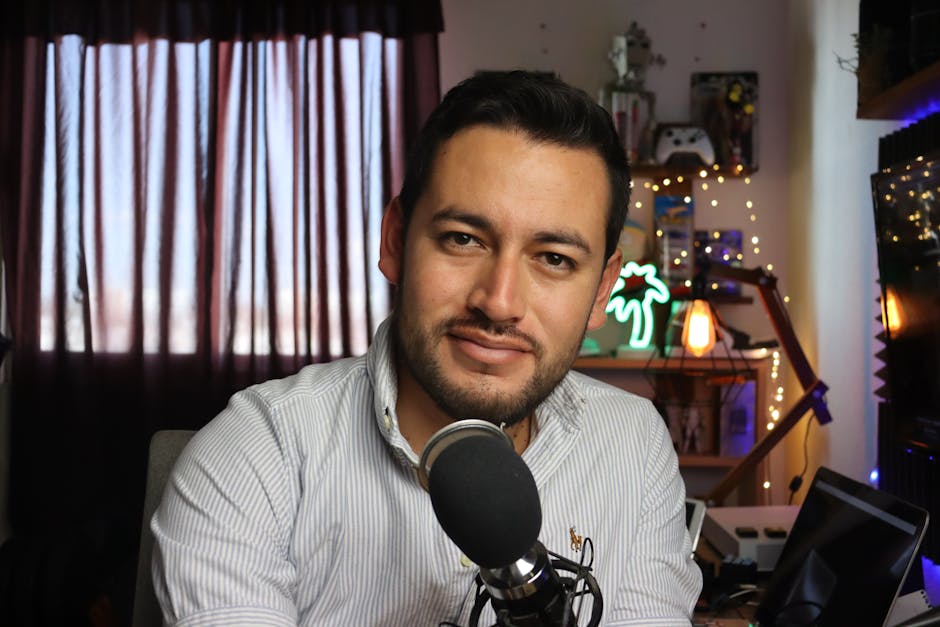My Guide to Creating Engaging Podcast Show Notes for Seo.
My Guide to Creating Engaging Podcast Show Notes for SEO
As a podcaster, you pour your heart and soul into every episode. You meticulously plan, record, and edit, hoping your message reaches as many ears as possible. But here’s a truth many overlook: the magic of discoverability often lies not just in your audio, but in the words surrounding it. I’m talking about your podcast show notes. Far from being a mere afterthought, these unsung heroes are your podcast’s secret weapon for attracting new listeners through search engines and keeping your existing audience deeply engaged. This isn’t just about stuffing keywords; it’s about crafting a compelling narrative that serves both algorithms and humans. In this guide, I’ll share my proven approach to transforming your show notes into powerful SEO magnets and engagement catalysts.
Unlocking Podcast Discoverability: Why “Show Notes for SEO” Isn’t Just a Buzzword
Before we dive into the nitty-gritty, let’s firmly establish why show notes are so critical for your podcast’s visibility. Think of your podcast as a vibrant, insightful conversation. Now, imagine that conversation happening behind a closed door. Without proper show notes, that’s often what your audio content is to search engines like Google, Apple Podcasts, and Spotify. They can’t “listen” to your audio (yet!), but they can certainly read your text.
This is where SEO (Search Engine Optimization) for your show notes becomes paramount. When you optimize your show notes, you’re essentially creating a searchable transcript and summary that tells search engines exactly what your episode is about. This isn’t just about helping people find your podcast when they specifically search for its name. It’s about capturing a much broader audience who are searching for the topics, guests, and ideas you discuss. My experience has shown that a well-optimized show notes page can act as a powerful landing page, drawing in organic traffic that might never have found your audio otherwise. It’s about being found when someone types “best tips for remote work productivity” or “interview with [guest’s name] on [specific topic]” – precisely the content you’re already creating.
Your Keyword Compass: Navigating Search Terms for Maximum Show Note Impact
The foundation of any good SEO strategy is keyword research, and your show notes are no exception. This isn’t about guessing; it’s about understanding what your potential listeners are actually typing into search engines. My approach starts with a blend of intuition and data.
Identifying Your Episode’s Core Keywords
Before writing a single word, I sit down and consider: What is the absolute main topic of this episode? What problem does it solve? What question does it answer? List out 2-3 primary keywords that encapsulate the episode’s essence. For example, if you interviewed an expert on sustainable living, your core keywords might be “sustainable living tips,” “eco-friendly home,” or “zero-waste lifestyle.”
Branching Out with Long-Tail Keywords
Once you have your core, think about long-tail keywords. These are longer, more specific phrases that people search for, often indicating higher intent. While they might have lower search volume individually, they add up and are often easier to rank for. Using the sustainable living example, long-tail keywords could be “how to start a compost bin,” “DIY natural cleaning products,” or “reducing plastic waste in the kitchen.” These are perfect for weaving naturally into your show notes. I often find these by looking at related searches on Google, or using tools like Ahrefs blog on keyword research or AnswerThePublic.

Integrating Keywords Naturally and Strategically
The key here is *natural integration*. Never “keyword stuff.” Google is smart, and stuffing will hurt, not help. Instead, think about how you would organically discuss these topics. Your primary keyword should ideally appear in your episode title (if possible), the show notes’ main heading (H1, even if it’s just your episode title), the first paragraph, and 2-3 times throughout the body. Long-tail keywords can be sprinkled throughout, especially in section headings (H3s) or as points in bulleted lists. Remember, you’re writing for humans first, search engines second.
Beyond the Summary: Crafting Show Notes That Convert Scrollers into Listeners
SEO gets people to your show notes, but engagement keeps them there and encourages them to hit play. Your show notes are not just a transcript or a bland summary; they are a sales page for your audio content. They need to be compelling, informative, and enticing.
The Magnetic Episode Description
This is often the first thing people see in podcast directories and search results, next to your episode title. It needs to be a concise, powerful hook. I recommend keeping it to 1-2 short paragraphs (under 150 characters is ideal for meta descriptions) that clearly state what the episode is about, who it’s for, and what listeners will gain. Use your primary keyword here. Think of it as the elevator pitch for your episode. For more on this, you might find my guide on crafting compelling podcast descriptions helpful.
Highlighting Key Takeaways and Discussion Points
People are busy. They want to know if an episode is worth their time. Use bullet points or numbered lists to highlight the main topics discussed, key insights, or actionable advice offered. This not only makes your show notes scannable (great for human readers) but also provides more keyword-rich content for search engines. For example:
- The surprising truth about sustainable living myths
- Practical steps to reduce your household waste by 50% this month
- Interview with Dr. Jane Doe on the future of eco-friendly innovations
Adding Value Beyond the Audio
Your show notes are an opportunity to provide additional resources. Link to guest websites, books mentioned, relevant studies, or even previous episodes of your own podcast. This not only adds value for your listener but also creates a rich internal and external link profile, which is excellent for SEO. Remember to use rel="nofollow" for external links to indicate to search engines that you’re not passing authority, but simply providing a helpful resource, such as Google’s SEO Starter Guide.
The Architecture of Engagement: Structuring Your Show Notes for Humans and Algorithms
How you structure your show notes is just as important as the content itself. A well-organized page is easier for both listeners to digest and search engine crawlers to understand. I always advocate for a clear, hierarchical structure.
Utilizing Headings (H1, H2, H3) Effectively
Your main episode title will typically be your H1. Within your show notes, use H2s to break up major sections (e.g., “Episode Summary,” “Key Discussion Points,” “Guest Bio”). Then, use H3s for more specific sub-topics within those sections. This creates a logical flow and helps search engines understand the hierarchy and relevance of your content. It’s like creating a mini table of contents for your episode.
The Power of Paragraphs and White Space
Avoid large blocks of text. Break your content into short, digestible paragraphs (2-4 sentences max). Use ample white space. This improves readability significantly. No one wants to read a wall of text, especially on a mobile device. Easy-to-read content keeps people on your page longer, signaling to search engines that your content is valuable.
Call to Action (CTA): Guiding the Listener
What do you want your reader to do after reading your show notes? Do you want them to subscribe, leave a review, visit a guest’s website, or share the episode? Always include a clear, concise Call to Action. Place it strategically at the end, and perhaps subtly within the text. For example: “If you found this episode helpful, please subscribe and leave us a review on Apple Podcasts!”
Leveraging Every Pixel: Advanced Show Note Tactics for Deeper SEO & Audience Connection
Once you’ve mastered the basics, there are several advanced tactics that can truly elevate your show notes and maximize their SEO and engagement potential.
Timestamp Magic: Guiding Both Google and Your Audience Through Your Episodes
Timestamps are a game-changer. They allow listeners to jump directly to specific segments of your episode that interest them most. But they also offer a fantastic SEO benefit. By listing out key topics with their corresponding timestamps, you’re essentially creating a mini-index for your episode. Search engines can potentially use these to highlight specific sections of your audio in search results (think of how YouTube videos show chapter markers). This also provides more opportunities to naturally weave in keywords related to those specific segments.




Post Comment